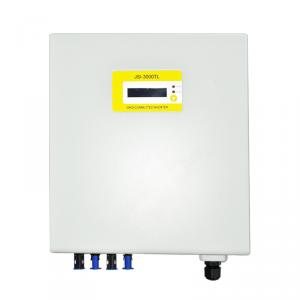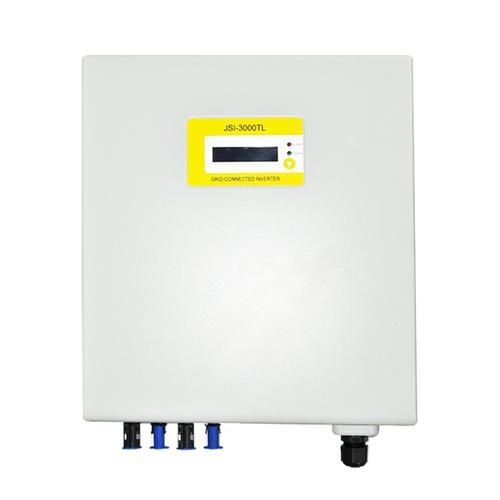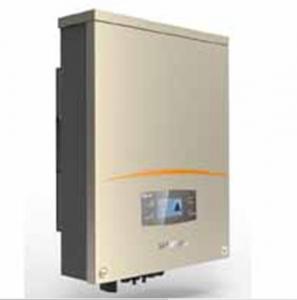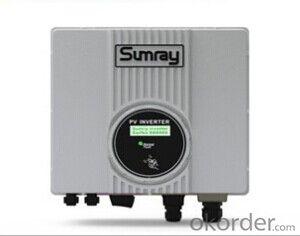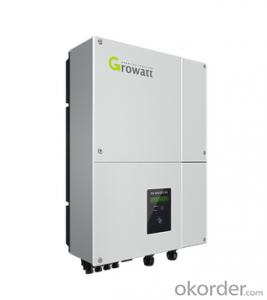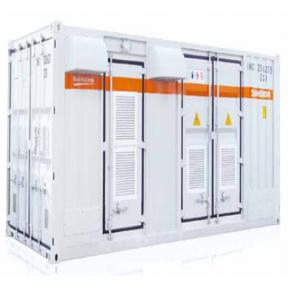Eg4 Solar Inverter 6000W Grid Connected Solar PV Inverter
OKorder Service Pledge
Quality Product, Order Online Tracking, Timely Delivery
OKorder Financial Service
Credit Rating, Credit Services, Credit Purchasing
You Might Also Like
Grid connected solar PV inverter 6000W
◆ Compact size and high power density
◆ High speed MPPT for real time power tracking and improved energy harvesting
◆ Transformerless operation for highest efficiency 97%
◆ High overload capability under most ambient conditions
◆ Certified grid connected operation according to the international standards
◆ True sine wave output
◆ Integrated RS485/RS232 serial communications
◆ Multi-language LCD display
| MODEL | 1100TL | 1500TL | 2000TL | 2500TL | 3000TL | 3600TL | 5000TL | 6000TL |
| Max. DC Input Power(W) | 1200 | 1750 | 2300 | 2700 | 3660 | 3750 | 5300 | 6400 |
| Max DC Voltage(Vdc) | 450 | 450 | 500 | 550 | ||||
| MPPT Operating Range(Vdc) | 60~450 | 100~450 | 100~500 | |||||
| Number of Parallel Inputs | 1 | 2 | 3 | |||||
| Number of MPPT Trackers | 1 | |||||||
| Max. Input Current(A) | 11.7 | 10 | 13 | 14.5 | 20 | 20 | 22.5 | 27.5 |
| Nominal Output Power(W) | 1100 | 1500 | 2000 | 2490 | 3000 | 3600 | 4600 | 6000 |
| Max. Output Power(W) | 1100 | 1650 | 2200 | 2490 | 3400 | 3600 | 5000 | 6000 |
| Nominal Output Current(A) | 4.8 | 6.5 | 8.7 | 10.8 | 13 | 15.7 | 20 | 26 |
| Max. Output Current(A) | 5.7 | 7.9 | 10.5 | 12 | 15.7 | 16 | 24 | 29.3 |
| Nominal AC Output Voltage(Vac) | 230 | |||||||
| AC Output voltage range (Vac)* | 190~265 | |||||||
| AC Grid frequency range (Hz)* | 50±5 | |||||||
| Power Factor (cosφ) | >0.99 | |||||||
| THDI | <3%(at nominal output power) | |||||||
| Max.efficiency | 96.50% | 96.50% | 97.00% | 97.10% | 97.20% | 97.30% | 97.40% | 97.40% |
| Euro.efficiency | 95.40% | 95.50% | 96.20% | 96.30% | 96.40% | 96.60% | 96.80% | 96.80% |
| MPPT. efficiency | 99.60% | 99.60% | 99.60% | 99.60% | 99.60% | 99.60% | 99.60% | 99.60% |
| Operating Temperature(℃) | -25~+60 | |||||||
| Noise typical[dB(A)] | ≤20dB(A) | |||||||
| Operating Consumption(W) | 0 | |||||||
| Electrical Isolation | Transformerless | |||||||
| Cooling Concept | Natural cooling | |||||||
| Protect Level | IP65 | |||||||
| Communication | RS232(WiFi optional) | |||||||
| Dimension (W×D×H)(mm) | 345*152*315 | 345*152*355 | 345*152*385 | 345*152*505 | 345*162*573 | |||
| Weight (Kg) | 12 | 13 | 15 | 19 | 24 | |||
| *AC grid voltage range and frequency range depend on local standards | ||||||||
- Q: Can a solar inverter be used in conjunction with a backup generator?
- Yes, a solar inverter can be used in conjunction with a backup generator. In a hybrid system, the solar inverter intelligently manages the power supply, utilizing solar energy when available and seamlessly switching to the backup generator during times of low solar production or high energy demand. This setup ensures continuous power supply even during cloudy days or power outages.
- Q: What is the role of a solar inverter in preventing system downtime?
- The role of a solar inverter in preventing system downtime is to convert the direct current (DC) produced by solar panels into alternating current (AC) that can be used to power electrical devices and to feed excess energy back into the grid. By maintaining a stable and reliable flow of electricity, solar inverters help prevent disruptions and downtime in the solar energy system, ensuring continuous operation and maximizing energy efficiency.
- Q: How does a solar inverter handle fluctuations in solar panel output?
- A solar inverter handles fluctuations in solar panel output by constantly monitoring the incoming DC power from the panels and adjusting its own output to match the required AC power demand. It utilizes Maximum Power Point Tracking (MPPT) technology to optimize the energy conversion process, ensuring that the inverter extracts the maximum power from the solar panels even if the output fluctuates due to factors like shading or varying sunlight intensity. This allows for a stable and reliable power supply to the electrical grid or connected devices.
- Q: PV grid-connected inverter can directly load it?
- TL5001 operating voltage range of 3.6 ~ 40V, its internal with an error amplifier, a regulator, oscillator, a dead zone control PWM generator, low voltage protection circuit and short circuit protection circuit
- Q: How does a solar inverter handle variations in AC load demand?
- A solar inverter handles variations in AC load demand by continuously monitoring the load demand and adjusting the amount of power it delivers from the solar panels accordingly. This is achieved through advanced control algorithms that optimize the conversion of DC power generated from the solar panels into AC power that matches the load demand. The inverter maintains a stable voltage and frequency output, ensuring that the electrical devices connected to it receive a consistent and reliable power supply, even when there are fluctuations in the AC load demand.
- Q: The working principle of photovoltaic grid - connected inverter
- In the small-capacity inverter generally push-pull inverter circuit, full-bridge inverter circuit and high-frequency step-up inverter circuit three, push-pull circuit, the step-up transformer neutral plug connected to the positive power supply, two power Alternating current, the output to get AC power, due to the power transistor to ground, drive and control circuit is simple, and because the transformer has a certain leakage inductance, can limit the short circuit current, thus improving the reliability of the circuit. The disadvantage is the low utilization of the transformer, driving the emotional load is poor.
- Q: What is the role of a fault detection system in a solar inverter?
- The role of a fault detection system in a solar inverter is to monitor the performance and integrity of the inverter and solar panel system. It detects and identifies any abnormalities or malfunctions within the system, such as voltage fluctuations, short circuits, or overheating. By promptly identifying and reporting faults, the system helps ensure the safe and efficient operation of the solar inverter, preventing potential damage and maximizing the overall energy generation.
- Q: Can a solar inverter be used with different types of power conditioning units?
- No, a solar inverter is specifically designed to work with solar power conditioning units. It may not be compatible with other types of power conditioning units such as wind or hydro power systems.
- Q: How does the maximum AC current rating affect the performance of a solar inverter?
- The maximum AC current rating of a solar inverter determines the maximum amount of power that the inverter can convert from DC to AC electricity. If the current rating is too low, the inverter may not be able to handle the peak power output from the solar panels, resulting in reduced performance and potential overheating or failure. On the other hand, if the current rating is high enough to handle the maximum power output, the solar inverter will perform efficiently and effectively, ensuring optimal energy conversion and output.
- Q: What is the role of a power factor controller in a solar inverter?
- The role of a power factor controller in a solar inverter is to regulate and maintain the power factor of the inverter's output. It ensures that the inverter's output power is in phase with the grid voltage, maximizing the efficiency of power transfer and reducing reactive power losses. By improving the power factor, the power factor controller helps to ensure stable and reliable operation of the solar inverter while meeting grid requirements and minimizing energy wastage.
Send your message to us
Eg4 Solar Inverter 6000W Grid Connected Solar PV Inverter
OKorder Service Pledge
Quality Product, Order Online Tracking, Timely Delivery
OKorder Financial Service
Credit Rating, Credit Services, Credit Purchasing
Similar products
Hot products
Hot Searches
Related keywords
